Shelduck
Tadorna tadorna (Linnaeus, 1758)
SU
 SHELD
SHELD  1730
1730

Family: Anseriformes > Anatidae
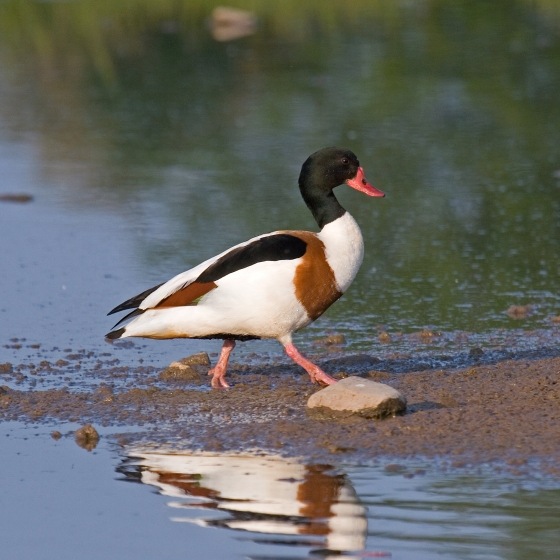
Between the size of most ducks and the larger geese, the Shelduck is easy to identify with its white, black and chestnut plumage and bright red bill.
In winter, Shelduck favour muddy estuaries and coastal marshes. Wetland Bird Survey data reveal the importance of north-west England for this species, with about ten thousand birds wintering on both the Dee and Mersey Estuaries. There has been a noticeable extension of range during the last 50 years.
The breeding range in Britain has also been extending inland over this period, with valley farmlands, pig fields and reservoirs are the habitats where Shelduck are most often encountered. This is a burrow-nesting species, so sandy soils and Rabbit warrens assist the birds in finding suitable nest sites.
Exploring the trends for Shelduck
Our Trends Explorer will also give you the latest insight into how the UK's Shelduck population is changing.
trends explorerIdentification
Shelduck identification is usually straightforward.
SONGS AND CALLS
Listen to example recordings of the main vocalisations of Shelduck, provided by xeno-canto contributors.
Flight call
Call
Develop your bird ID skills with our training courses
Our interactive online courses are a great way to develop your bird identification skills, whether you're new to the hobby or a competent birder looking to hone your abilities.
Browse training coursesStatus and Trends
Population size and trends and patterns of distribution based on BTO surveys and atlases with data collected by BTO volunteers.
CONSERVATION STATUS
This species can be found on the following statutory and conservation listings and schedules.
POPULATION CHANGE
Shelducks occurred on relatively few CBC plots, most of which were close to a coast or an estuary, and it is unclear how well the CBC trend represented the UK breeding population. The CBC showed a substantial increase from the mid 1960s until the early 1980s, some decrease during the 1980s, and stability during the 1990s, although the wide confidence intervals provide scope for other interpretations. Population increase was associated with expansion of range, measured as an additional 20% of occupied 10-km squares in Britain between 1968-72 and 1988-91 (Gibbons et al. 1993). The UK winter Shelduck population rose during the 1960s and 1970s, alongside the rise in breeding numbers, but then decreased from the mid 1990s, although a slight upturn has occurred in the last five years (WeBS: Frost et al. 2020). The BBS index is affected by occasional large counts, and therefore its confidence intervals are again relatively wide. BBS results show no clear population trend since 1994, but there has been further expansion of breeding population (Balmer et al. 2013). The species has increased across Europe since 1991 (PECBMS: PECBMS 2020a>).
| UK winter population |
-23% decrease (1995/96 to 2020/21)  |
Exploring the trends for Shelduck
Our Trends Explorer will also give you the latest insight into how the UK's Shelduck population is changing.
trends explorerDISTRIBUTION
Shelducks wintering around the coastline favour muddy estuaries and coastal marshes. Inland, they utilise a range of sites including valley farmland, lakes, reservoirs and pig fields. The breeding distribution map shows birds to be well distributed around the lowland coastal fringe and at scattered inland locations in northern, central and southern England.
Occupied 10-km squares in UK
| No. occupied in breeding season | 1194 |
| % occupied in breeding season | 40 |
| No. occupied in winter | 1184 |
| % occupied in winter | 39 |
European Distribution Map
European Breeding Bird Atlas 2
Breeding Season Habitats
| Most frequent in |
Estuaries 
|
DISTRIBUTION CHANGE
The continued colonisation of inland breeding sites since the 1968–72 Breeding Atlas is the most striking change for the Shelduck and is also consistent with the change in range that has taken place in winter; increases of 34% and 17% in range size were recorded when compared with the 1968–72 Breeding Atlas and the 1981–84 Winter Atlas respectively.
Change in occupied 10-km squares in the UK
| % change in range in breeding season (1968–72 to 2008–11) | +38.8% |
| % change in range in winter (1981–84 to 2007–11) | +17.2% |
SEASONALITY
Shelducks are present throughout the year, though more often reported in winter and during spring migration.

Movement
Information about movement and migration based on online bird portals (e.g. BirdTrack), Ringing schemes and tracking studies.
An overview of year-round movements for the whole of Europe can be seen on the EuroBirdPortal viewer.
RINGING RECOVERIES
View a summary of recoveries in the Online Ringing Report.
Foreign locations of birds ringed or recovered in Britain & Ireland

Biology
Lifecycle and body size information about Shelduck, including statistics on nesting, eggs and lifespan based on BTO ringing and nest recording data.
PRODUCTIVITY & NESTING
Number of Broods 
|
1 |
Egg Size 
|
66×47 mm Weight = 78 g (of which 9% is shell) |
Exploring the trends for Shelduck
Our Trends Explorer will also give you the latest insight into how the UK's Shelduck population is changing.
trends explorerSURVIVAL & LONGEVITY
View number ringed each year in the Online Ringing Report
Exploring the trends for Shelduck
Our Trends Explorer will also give you the latest insight into how the UK's Shelduck population is changing.
trends explorerBIOMETRICS
Wing Length 
|
Adults | 328.5±16.5 | Range 298–348mm, N=731 |
| Juveniles | 296.5±21.4 | Range 256-324mm, N=94 | |
| Males | 335.2±12 | Range 316–350mm, N=526 | |
| Females | 311.9±14 | Range 291–338mm, N=193 |
Body Weight 
|
Adults | 1.25±0.19 | Range 0.900–1.55kg, N=602 |
| Juveniles | 1050±245.3632 | Range 730–1500g, N=83 | |
| Males | 1.31±0.15 | Range 1.05–1.56kg, N=437 | |
| Females | 1.08±0.17 | Range 0.850–1.40kg, N=153 |
Feather measurements and photos on featherbase 
CODES & CLASSIFICATION
Ring size 
|
G* |
Field Codes 
|
2-letter: SU | 5-letter code: SHELD | Euring: 1730 |
For information in another language (where available) click on a linked name
Research
Interpretation and scientific publications about Shelduck from BTO scientists.
CAUSES AND SOLUTIONS
Causes of change
There is little good evidence available regarding the drivers of the breeding population change in this species in the UK.
Further information on causes of change
No further information is available.
Information about conservation actions
The recent trend for Shelduck is uncertain and hence it is unclear whether direct conservation action is currently required for this species in the UK. There is little specific research evidence relating to breeding requirements for the species, but it is likely that actions to maintain and improve availability and habitat quality in wetland habitats will benefit Shelduck. The species nests in underground holes or similar cavities (e.g. rabbit burrows) and the provision of artificial nest sites may help support nesting (BirdLife International)
PUBLICATIONS (4)
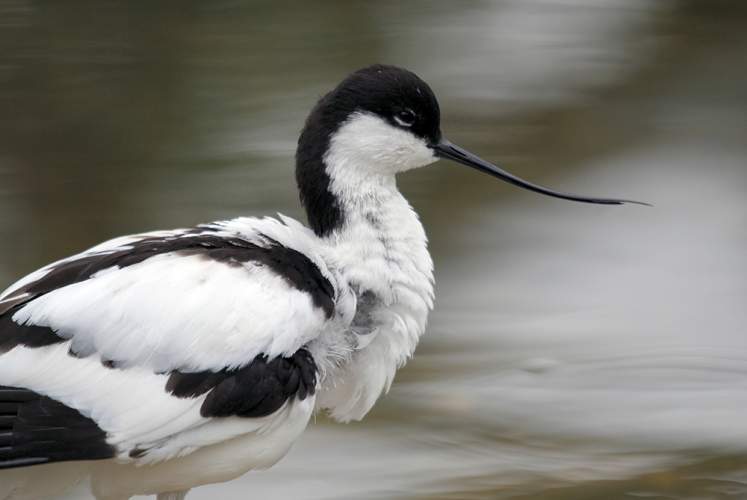
Consequences of population change for local abundance and site occupancy of wintering waterbirds
Wavering Waterbirds
Protected sites are assigned based on population statistics for vulnerable and endangered species. This new study using WeBS data shows that changes in population size can affect local abundance, and thus influence whether or not key targets are met for site protection.
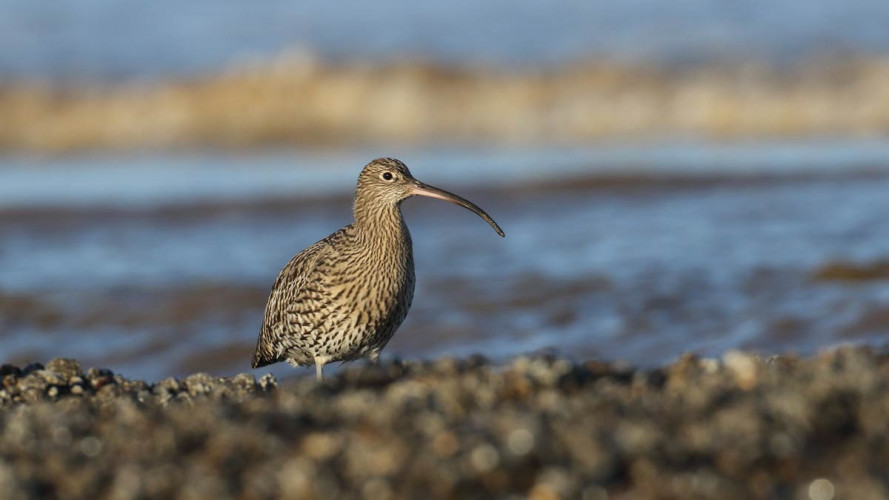
Long term changes in the abundance of benthic foraging birds in a restored wetland
Low tide distribution of wintering waders and shelduck on the Severn Estuary in relation to the proposed tidal barrage
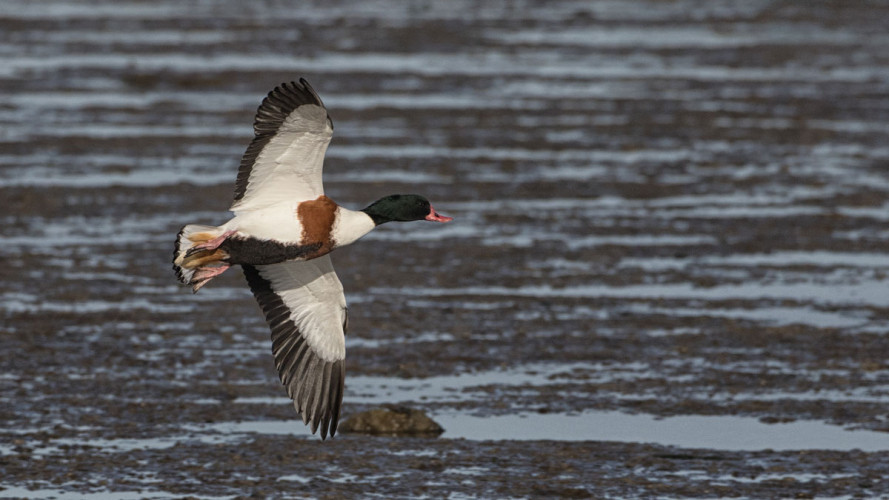
Migratory movements of British and Irish Common Shelduck Tadorna tadorna: a review of ringing data and a pilot tracking study to inform potential interactions with offshore wind farms in the North Sea
Shelduck migratory paths cross potential wind farm sites
Links to more information from ConservationEvidence.com
Would you like to search for another species?







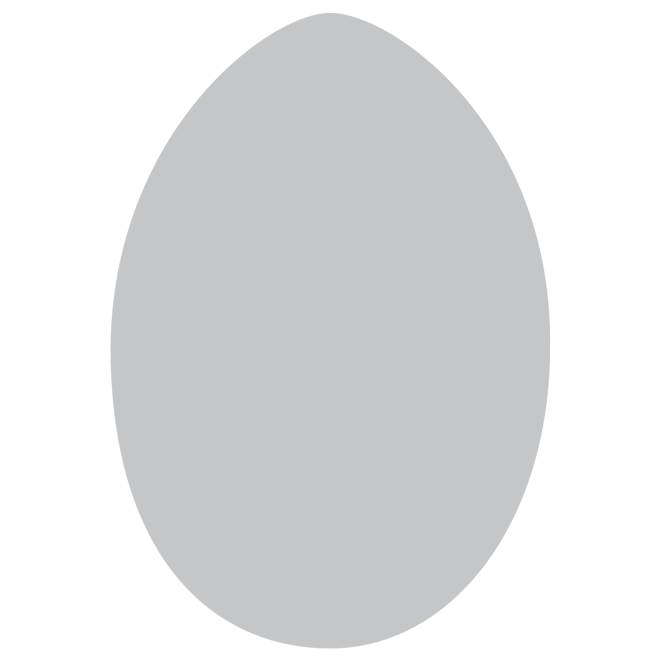






Share this page